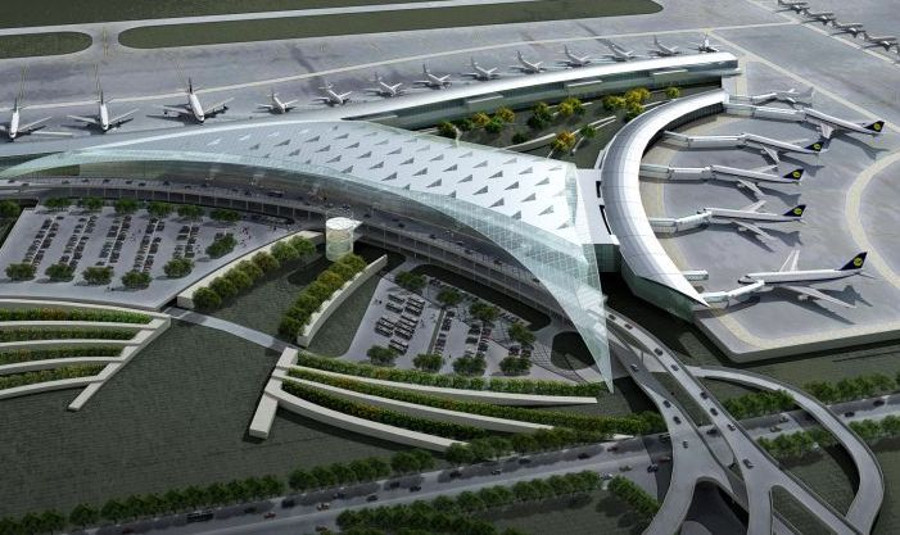- Kastelli International Airport: expected completion by February 2027
- Initial capacity of 10 million travelers, expandable to 18 million
- Replacement for Nikos Kazantzakis International Airport in Heraklion
- Aims for environmental sustainability with advanced energy management systems
The new air traffic hub near Kastelli will take over the functions of the existing Heraklion airport and become the second largest airport in Greece. The opening is planned for 2027. The facility is expected to handle up to 18 million passengers annually. However, due to its historical roots and archaeological finds, the project is not without controversy.
The construction of the airport, built on land once used as an airfield during World War II, has sparked opposition from locals. Despite this, tourism development projects in the region usually receive swift regulatory approvals. A recently discovered archaeological structure – believed to be an ancient site for festivals and rituals – is to be preserved, and there are plans to relocate a proposed radar station.
Architectural advances and environmental aspects
The project, led by a consortium including GEK Terna and GMR Airports, is almost halfway complete. Currently, 40% of the 93,572 square meter terminal is completed. A newly built 3,200 meter long runway will enable long-haul flights.
The facility is designed to be a “green airport” and will feature state-of-the-art technology to minimize its carbon footprint. The terminal will have 19 gates with leisure and essential service facilities and will enhance the passenger experience through biometric screening and entertainment options.
Infrastructure and connectivity
New road networks connecting northern and southern Crete will improve access to the airport. Once completed, a 25-kilometer section will reach southern Crete and the Northern Road Axis of Crete (BOAK) will soon be created, allowing travel to the airport from Heraklion in just 25 minutes.
Other facilities include general aviation areas, VIP terminals, maintenance hangars and more. A 700-hectare commercial zone will blend seamlessly into the city’s landscape and provide travelers with a variety of amenities.
The new terminal has 19 boarding gates, eight of which are adaptable for both Schengen and non-Schengen flights. The terminal covers a total area of 94,000 square meters on eight levels and promises a comprehensive travel experience. Throughout their journey, passengers benefit from biometric and automated procedures as well as a range of entertainment and leisure options. Facilities for dining, prayer and family care ensure a comfortable and unique stay.
Advanced aircraft infrastructure
- Parking of aircraft: 33 remote control positions designed for ICAO Code C power-in/power-out operations and equipped with a fuel hydraulic system. Code C aircraft also have 10 passenger boarding bridges (PBB).
- MARS positions: 6 positions for a multi-aircraft ramp system for ICAO Code E class aircraft, complete with tank hydrant, 400 Hz power supply and preconditioned air.
- Helicopter facilities: 3 designated parking spaces for helicopters.
Runways and aviation facilities
The airport will have a new 3,200-meter-long runway suitable for both civil and military use, with ICAO classification 4E. This runway is connected to the existing military runway of the 133rd Fighter Wing by two taxiing links.
Additional features
- VIP and General Aviation Terminal: Capacity for 16 aircraft
- De-icing and washing: Special installations
- Support facilities: Includes fuel storage, biological treatment and waste management systems
- maintenance: MRO aircraft maintenance hangar
- Commercial space: Terminal shopping areas on 13,000 sqm
- Transport hub: Includes a bus station and other public transport
- Storage and office space: Over 6,000 m² for storage and office functions
Delays and challenges
So far, more than 35 archaeological sites have been discovered during the development of the airport and its road network. Although the Greek authorities have decided to continue with the construction works, the relics are receiving the protection they deserve.
The archaeological finds are not the only challenges to the airport’s schedule. Covid-19 pandemic Airport investments were severely affected, privatisation efforts were halted and Slowdown in new construction. In February 2020The Greek Prime Minister celebrated the opening of Kastelli/New Heraklion Airport on Crete with a foundation stone laying ceremony. June 2022– more than two years later – there has been no significant progress and construction was scheduled to begin in the summer of this year.
The project schedule has been postponed several times. Originally, completion was scheduled for June 2024an updated estimate proposed 2025However, a recent announcement now sets the opening for February 2027This extension comes at a time when the world is grappling with economic obstacles such as high inflation and potential stagflation, complicated by geopolitical tensions in Europe.
Once operational in 2027, Kastelli International Airport will replace the current Nikos Kazantzakis International Airport in Heraklion. It will be the second busiest airport in Greece and will be able to handle up to 18 million passengers annually. This development will fundamentally change the island’s air traffic landscape, improving its connectivity and capacity.
It remains to be seen what impact the ongoing challenges will have on the development of Kastelli Airport, but its final completion is expected to set a new standard for air travel in Greece.

